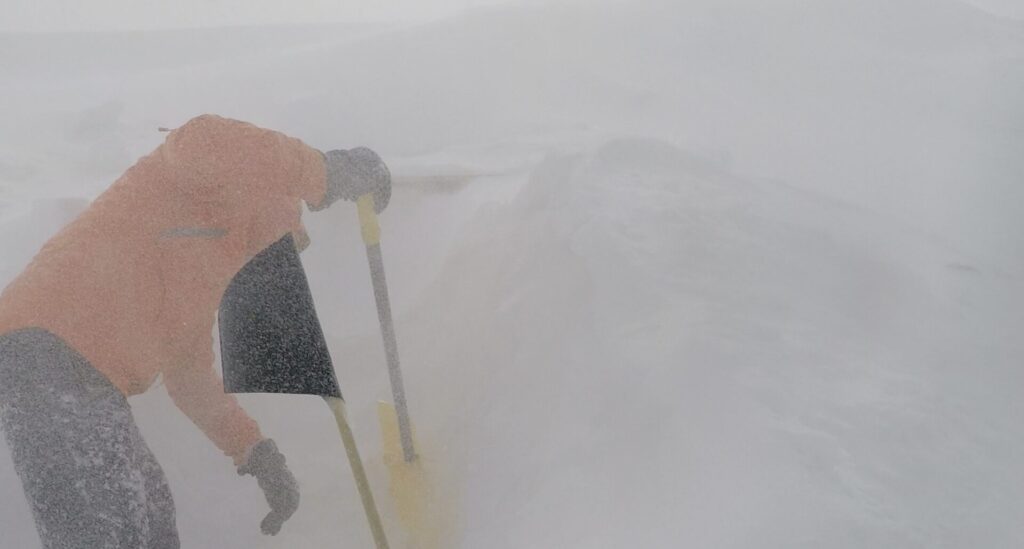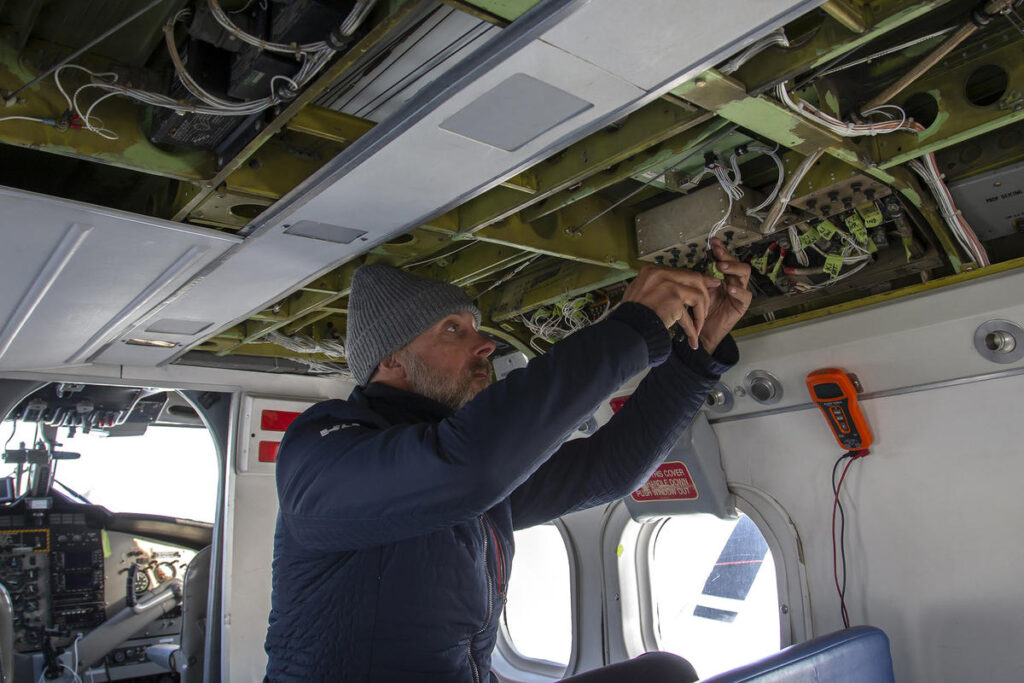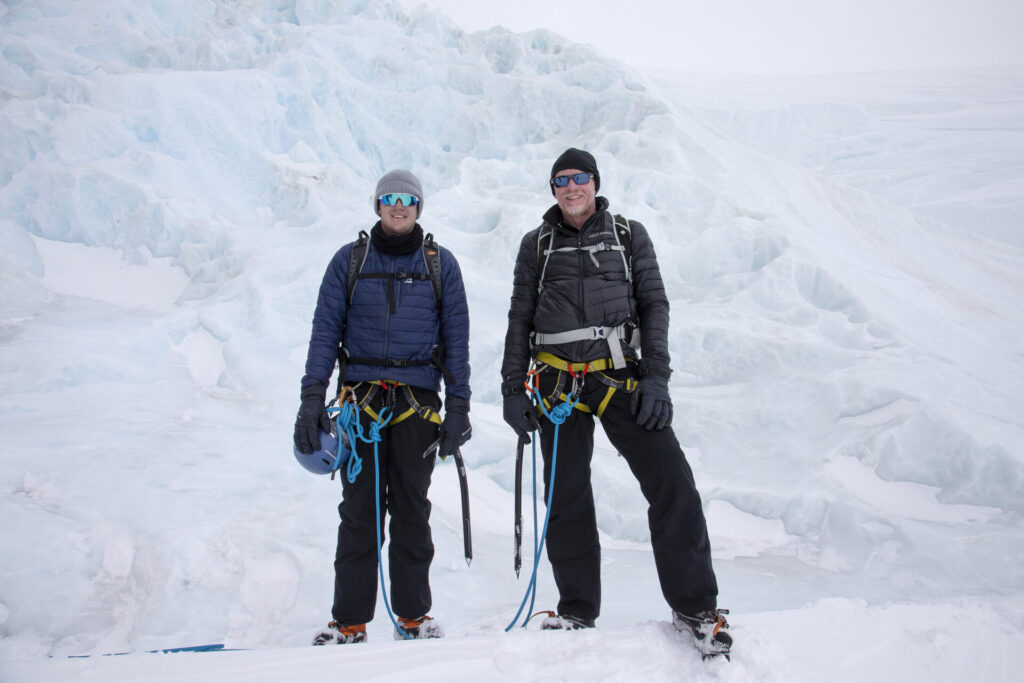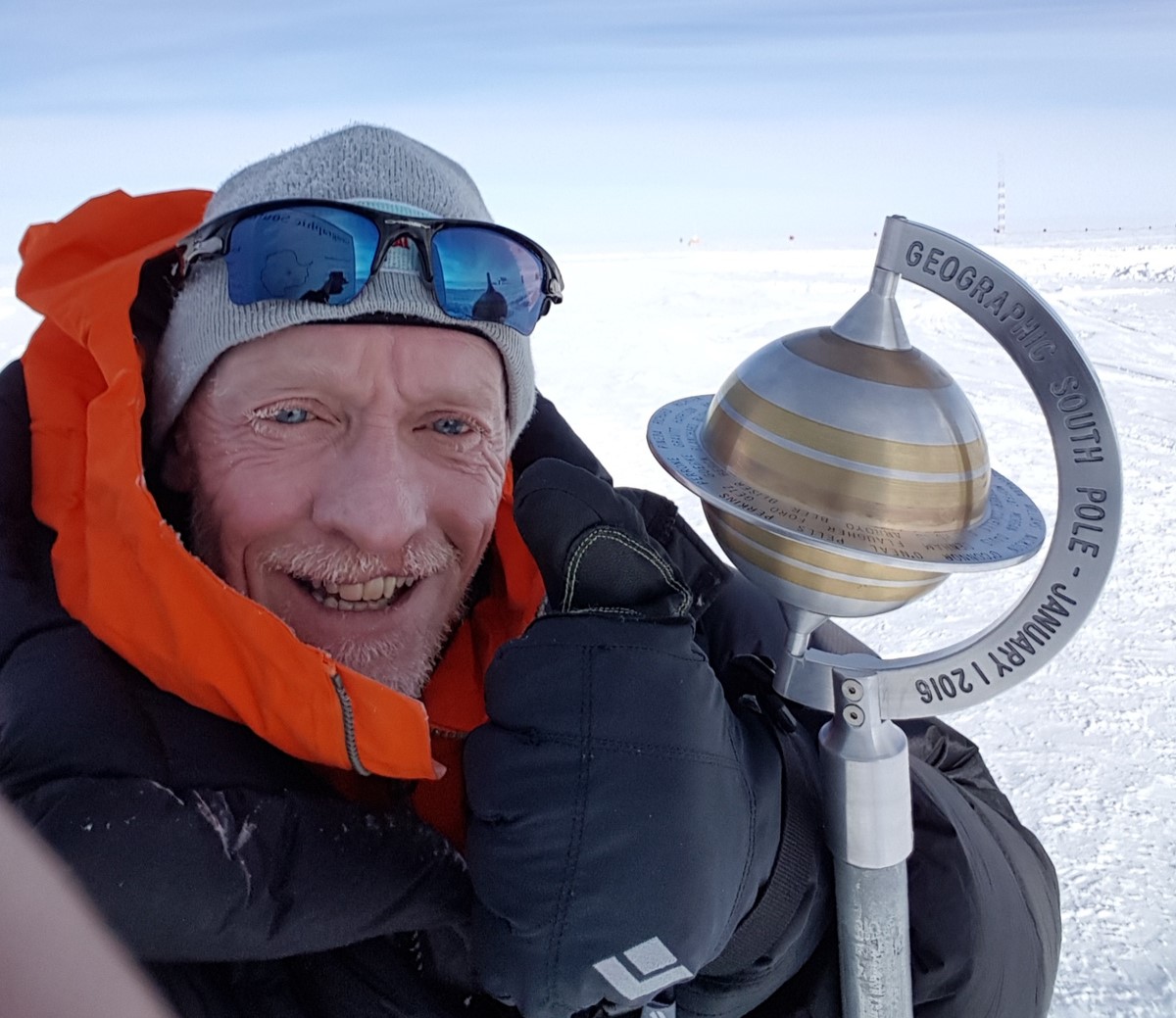British explorer Chris Brown found himself stranded in Antarctica for a month, battling extreme winds of up to 120mph and bone-chilling temperatures plunging to -28°C. Accompanied by his son Mika, 28, they embarked on a mission to reach the Southern Pole of Inaccessibility, one of the most isolated places on Earth.
However, their plans were thwarted when their Twin Otter plane suffered a generator relay failure amidst the worst storms in 17 years. Despite multiple attempts to procure replacement parts and a no-fly zone enforced for Elon Musk’s rocket re-entry, they remained marooned in the desolate landscape for four weeks.
READ MORE: Young Generation Z Abandons Music Streaming for Trendy Cassette Tapes at the UK’s Exclusive Store

Chris recounted, “We landed at Wolf’s Fang as the weather was due to come in two days. We went off to view a colony of Emperor Penguins near Atka Bay but the plane developed a fault on the way back, which we didn’t know then but it turned out to be fatal for the expedition. There are numerous relays on the Twin Otter, which is normally a very robust vehicle. But two of them blew on the way back. The plane was able to get back to Wolf’s Fang that day but would require replacement relays to fly after that. And then the biggest storm came in.”
He continued, “The base winds measured 90mph with gusts up to 120mph, which is Hurricane Force on the Beaufort scale. We all had to get into one central tent together because that one had the best integrity and also so everyone was together. Everyone buddied up. You didn’t go anywhere, even to the loo, without your shadow so that nobody would be unaccounted for.
The guides stuck out poles before the storm hit so you could find your way to the generators, and the food. The poles were two meters apart and roped together so you could follow the ropes when visibility dropped below two meters.”

Chris described the conditions as a “complete ‘white out’,” where venturing outside meant risking being swept off one’s feet. The situation worsened when snow infiltrated the plane’s engine, exacerbating their plight. The critical need for replacement relays became apparent, but sourcing them and arranging delivery to the South Pole was a formidable challenge amidst the relentless storms.
“It took three or four days for them to find out there were no relays in Cape Town,” Chris explained. “They looked elsewhere but couldn’t find any. Another five days went by. They also tried Canada which is where the Twin Otter is based.”
Despite efforts to expedite the process, including attempts to courier the relays, the situation remained dire. Frustration mounted as days passed without progress, compounded by additional storms hampering flight operations. Even when hope flickered with news of the relays being on the next plane, it was repeatedly dashed.

“It was a beautiful day and we thought we were saved,” Chris recalled, “then as the plane was coming in some fog came down. The pilot had to be able to see two miles to land, but clearly he couldn’t anymore.”
Their optimism shattered, Chris and Mika faced further disappointment when subsequent flights encountered technical issues, preventing safe landings. The mounting challenges took a toll on morale, exacerbated by dwindling food supplies and failing heating elements.
“At this point, we decided to abort the expedition,” Chris recounted. “But of course, we couldn’t escape Antarctica. If no planes could get in, none were going out. Then a fourth storm hit, it was pretty bad.”
“The wind speeds weren’t as bad as the first storm at ‘just’ 60-70mph with gusts of 100mph, but it lasted much longer – about five or six days in total – and it was snowing heavily,” Chris elaborated. “The only people who were happy were two French researchers whose climate change model had predicted more snow storms.”

As Chris and Mika remained stranded, their predicament extended into Chris’s birthday. However, a fortuitous turn of events marked his birthday present – favorable weather conditions finally allowed a plane to land, facilitating their escape from the White Desert.
Undeterred by their previous challenges, Chris and Mika returned to Antarctica in January 2023, achieving their goal of reaching the Southern Pole of Inaccessibility on January 11th, 2023. Chris’s ambitious endeavor involves visiting all the continental Points of Inaccessibility (PIAs), akin to the Seven Summits challenge for mountaineers.

“Poles of inaccessibility have been defined by the geographic community for many years,” Chris explained. “It is the point furthest from the coast/sea in any direction.”
Chris aims to be the first person to visit all the continental PIAs, spanning North and South America, Africa, Australasia, Antarctica, Eurasia, and the Northern Arctic pole. He has already visited five of the PIAs, surpassing other explorers in this quest.
Despite facing setbacks, Chris’s determination remains steadfast, as evidenced by his continued pursuit of exploration and discovery.
Read more about Chris and Poles of Inaccessibility at inaccessibility.net and brown.co.uk.

















Got a Questions?
Find us on Socials or Contact us and we’ll get back to you as soon as possible.